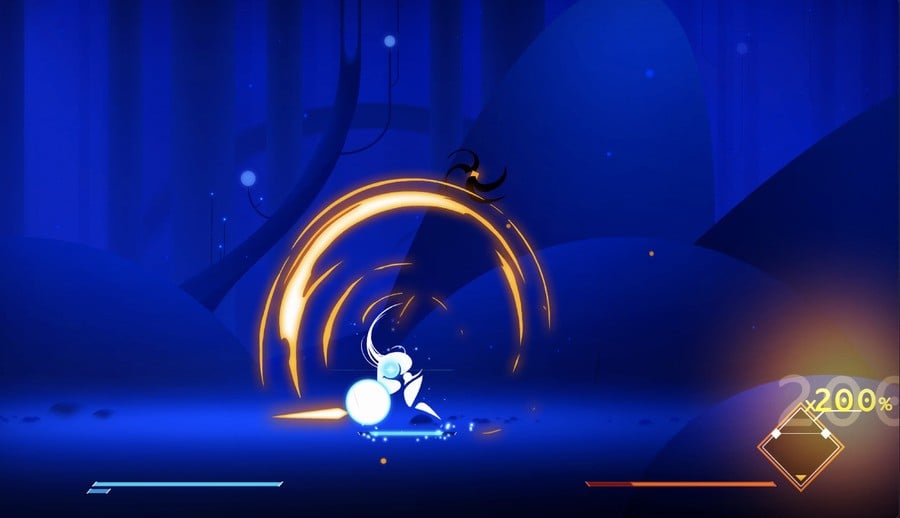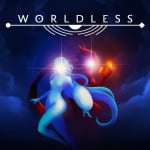We recently spoke to producer and studio co-founder David Sanchez Garcia via email to find out more about the recently formed team and the thinking behind its impressive debut release...
Nintendo Life: First up, tell us a little about Noname/Sin Nombre. How big is the team there, and when did you start working on Worldless?
David Sanchez Garcia : Noname Studios is a game studio founded in January 2021 by three veterans of the industry with the idea of developing Worldless. Our studio has been 100% remote since the beginning, as it was born right in the middle of the pandemic. Currently, there are seven people working full time at the studio, although for the development of Worldless we were up to nine people during the peak moment of the project.
We started working on the development of Worldless right after founding the studio, but the idea comes from way earlier.
What was the genesis of the project?
We tend to say this has been a “10-year project”. Joel, our Creative Director, had the idea for the game while he was still studying at university and a few years later he shared the idea with Carlos and me while the three of us were working at the same place. We both loved it and agreed this would be a game we’d want to do. Move a few years forward and at some point we started the development of a demo, which we finished in about six months working on it during our free time. Until that moment both me and Carlos had been working on it for fun and to learn new technologies (I was a programmer at the time), but Joel had a very clear idea of the whole game and he continued pushing for it. During the next few years, Joel moved the game around, shared stuff on Twitter, and talked to some publishers until he finally landed a deal with Coatsink which would allow the whole game to be developed. That’s when the three of us decided to found Noname Studios and assemble a team of people who’d help on what finally became Worldless.
Does the final product align with what you thought it would be at the outset?
Yes. The idea for the game was very clear after Joel had been thinking about it for such a long time and we have not deviated much from the initial idea. The scope has changed a bit and we’ve added and removed a few things here and there, but the game is pretty much what we had in mind since the beginning.
The game's narrative is mysterious, very open to interpretation. Were there any specific texts (games or otherwise) which inspired that abstract nature?
The focus of the game was always to have an interesting and new kind of combat, so the narrative was mostly an excuse to have an interesting setting where the game took place. Our intention was never to create a game where the narrative was the main focus and therefore we decided to leave it as open to interpretation as possible. There is a full story which is known by the team (and quite a cumbersome one I’d say!), but we prefer to leave it to the interpretation of players to see what they understand. We want them to tell us their interpretation of the story!
Regarding inspiration, Joel always says the idea of a more abstract world came after he watched the [2006 Darren Aronofsky] movie “The Fountain".
In the last several years the Metroidvania genre has exploded in popularity, with various examples — good ones, too! — releasing on a monthly basis. Was there any trepidation about making an entry in a genre that's gotten so crowded? Were there any games that influenced your approach on Worldless?
We actually don’t like to talk about Worldless as a Metroidvania as it doesn’t have all the treats from the genre. When we thought about the idea of Worldless our main focus was on having an interesting new kind of combat which mixed what we loved about games like Final Fantasy and Devil May Cry but also had an interesting setting and where players felt like they were growing during the game, that’s why we also put lots of love in the platforming and progression in the world.
We believe we’ve done something that’s quite unique and that, hopefully, will resonate with players and will help us find a place in their game libraries.
the art style [is] a mix of creativity and restrictions. We knew we wanted to do something flashy and well-animated but that we were not going to be able to do so with a small team.
The turn-based combat aspect is certainly a big differentiator — can you tell us where that idea came from, and the challenges of integrating it seamlessly in this style of game?
The combat came from the idea of having a way of fighting enemies which felt both as frenetic, stylish, and action-oriented as games like Devil May Cry but also where you had to think about your actions and strategize to defeat your opponents as seen in many JRPGs. We’re big fans of Final Fantasy and they were part of our youth, which definitely influenced us while creating the combat.
Artistically, too, Worldless feels like a game that does its best to stand apart. Can you talk a little about the art style and animation, any specific influences, and its evolution throughout development?
Regarding the art style, it’s a mix of creativity and restrictions. We knew we wanted to do something flashy and well-animated but that we were not going to be able to do so with a small team. Initially, the characters had a full body and were animated frame by frame, but that was too much work. That’s why Joel decided to try the current style which allowed him to do cool animations quickly and was also unique enough that it’d attract the player’s attention. The minimalistic art style was born after this and thanks to our super-talented lead artist we were able to create the unique world of Worldless.
Despite its somewhat minimalist look, there's still a lot going on. With Switch entering its eighth year next March, was there anything you had to scale down massively to get it running on the system?
Fortunately, in the end, not much. The biggest challenge for Switch was memory management, as there are almost no loading screens and we had to create a system which allowed us to load/unload stuff from memory while moving around the world (similar to what most open-world games do). We also had to reduce a little bit the resolution for a bunch of textures, but we’re happy with how the game looks and plays in Switch. Plus we managed to have stable 60FPS almost everywhere!
The game seems to have gone down well with critics. What's next for Noname? DLC? Worldless 2? A totally different genre?
There’s not much we can say, but we’re already working on our next game, which will continue with our philosophy of “doing things a bit differently than other games” and coming up with mechanics which we hope will surprise our players.
Our thanks to David and the Noname team. Worldless launched on 21st November for $19.99 / £15.99 / 19,99€ and is really rather good — let us know below if you've played it already.

 Watch on YouTube
Watch on YouTube
